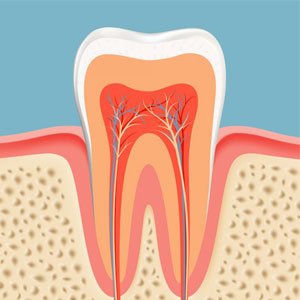Root Canal

The primary goal of a root canal is to save a tooth that would otherwise need to be extracted. There are several reasons why a tooth’s pulp may become infected or damaged:
Deep Decay: When tooth decay extends deep into the tooth and reaches the pulp, it can cause an infection.
Trauma: A blow to the tooth can result in damage to the pulp, leading to inflammation and infection.
Cracks or Chips: Cracks or chips in the tooth can expose the pulp, making it vulnerable to infection.
Repeated Dental Procedures: Teeth that have undergone multiple dental procedures may be more prone to infection.
The Root Canal Procedure:
Diagnosis: The dentist will examine the tooth and take X-rays to assess the extent of the damage and determine if a root canal is necessary.
Anesthesia: Local anesthesia is administered to ensure the patient is comfortable throughout the procedure.
Access Opening: The dentist creates a small opening in the tooth to access the pulp chamber and root canals.
Cleaning and Shaping: The infected or damaged pulp is removed, and the canals are cleaned, shaped, and disinfected to remove any remaining bacteria.
Aftercare and Recovery:
Pain Management: Over-the-counter pain relievers can help manage any discomfort after the procedure.
Follow-Up: Patients are advised to attend follow-up appointments to monitor the healing process.
Oral Hygiene: Good oral hygiene practices, including regular brushing and flossing, are essential to prevent future infections.
